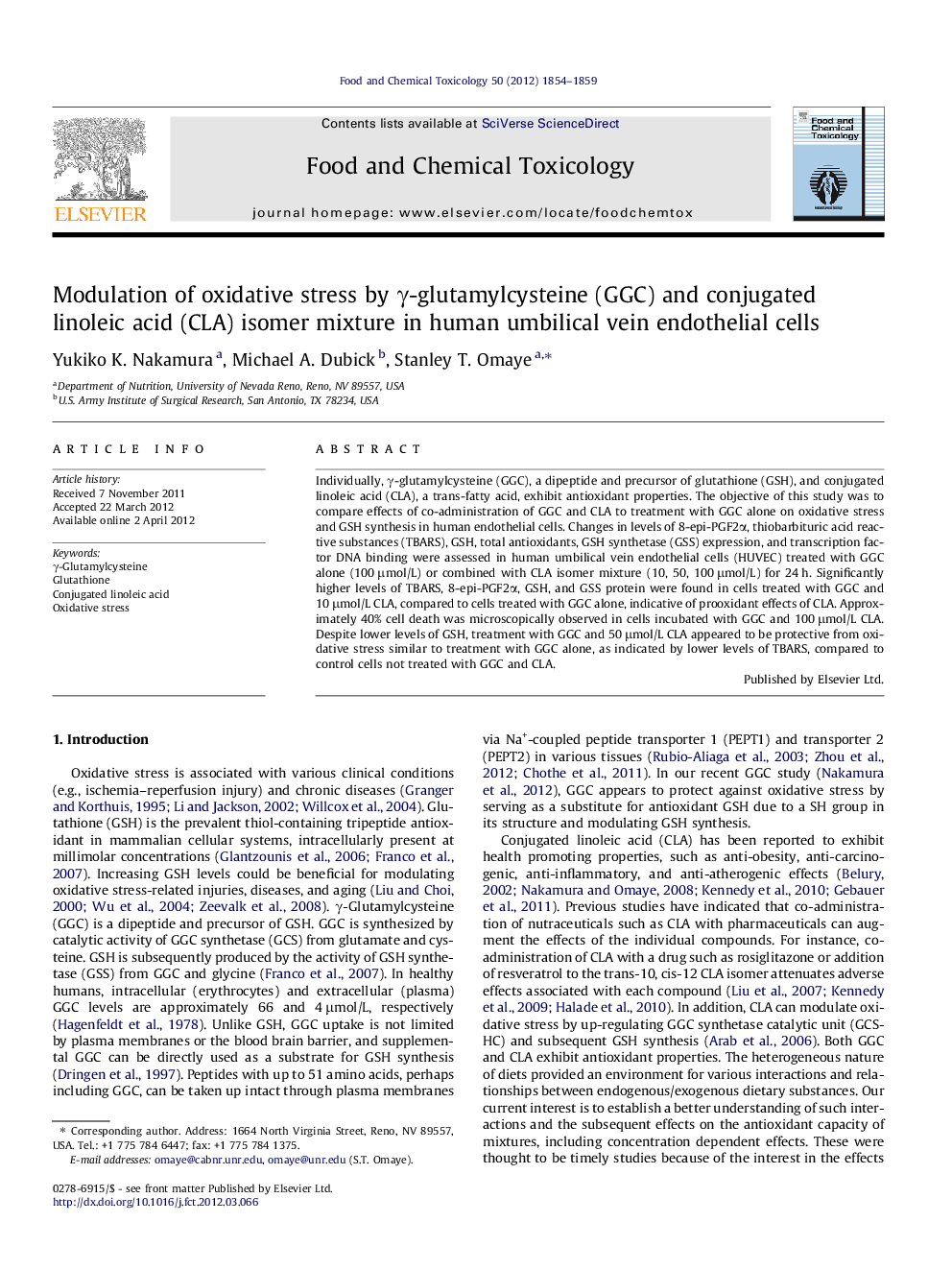| Article ID | Journal | Published Year | Pages | File Type |
|---|---|---|---|---|
| 5852816 | Food and Chemical Toxicology | 2012 | 6 Pages |
Individually, γ-glutamylcysteine (GGC), a dipeptide and precursor of glutathione (GSH), and conjugated linoleic acid (CLA), a trans-fatty acid, exhibit antioxidant properties. The objective of this study was to compare effects of co-administration of GGC and CLA to treatment with GGC alone on oxidative stress and GSH synthesis in human endothelial cells. Changes in levels of 8-epi-PGF2α, thiobarbituric acid reactive substances (TBARS), GSH, total antioxidants, GSH synthetase (GSS) expression, and transcription factor DNA binding were assessed in human umbilical vein endothelial cells (HUVEC) treated with GGC alone (100 μmol/L) or combined with CLA isomer mixture (10, 50, 100 μmol/L) for 24 h. Significantly higher levels of TBARS, 8-epi-PGF2α, GSH, and GSS protein were found in cells treated with GGC and 10 μmol/L CLA, compared to cells treated with GGC alone, indicative of prooxidant effects of CLA. Approximately 40% cell death was microscopically observed in cells incubated with GGC and 100 μmol/L CLA. Despite lower levels of GSH, treatment with GGC and 50 μmol/L CLA appeared to be protective from oxidative stress similar to treatment with GGC alone, as indicated by lower levels of TBARS, compared to control cells not treated with GGC and CLA.
⺠An antioxidant role of GGC was confirmed, consistent to our previous study. ⺠Co-administration of CLA with GGC had differential effects depending on doses of CLA. ⺠Combination of CLA with GGC at an intermediate dose showed additional antioxidant properties. ⺠Cytotoxicity and prooxidative effects were observed at a high and low dose of CLA, respectively. ⺠The value of CLA as an adjunct to reduce oxidative stress appeared to be limited by its narrow range of efficacy.
